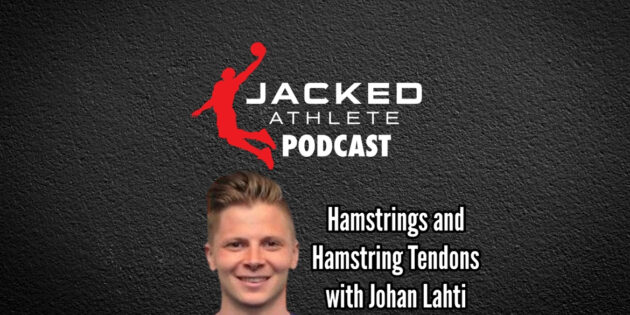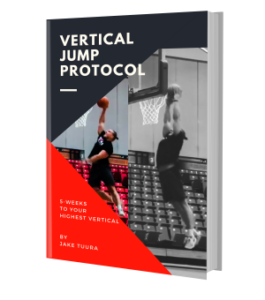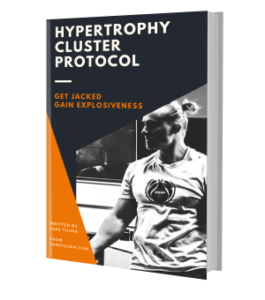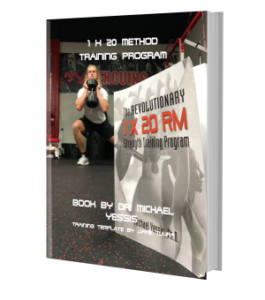https://podcasts.apple.com/us/podcast/jacked-athlete-podcast/id1462537296?i=1000703488847
“When we talk about the tendons, we can talk about the free tendon that’s outside the muscle and then the intramuscular tendon that’s called also the aponeurosis. And those are highly different between the four hamstring muscles and the three biarticular, which basically tells us that just from a structural standpoint, they’re specialized for different things.”
“We have the one that’s injured the most in sprinting and that’s biceps femoris long head.”
“Biceps femoris long head is kind of a hybrid muscle.”
“Semitendinosus is classically a long fusiform muscle and it has also long free tendons. The fascicles are very oriented with the tendons. So basically, they have direct pull. The fusiform muscles are very good at shortening fast, so basically, they don’t have to be basically designed for running economy per se where the tendon does the work. No, the muscle actually is specialized to do the work in these muscles very well. It’s not an issue for it to shorten fast and still produce a decent amount of force. Whereas semi membranosus is completely the opposite. It has high penation angle instead. So not very long fascicles and high pennation angles like the calf muscles, for example, that’s one of the biggest pennation angle muscles in the body. They can produce a lot of force due to this high penation angle of the muscle fascicles. And they are not in line with the tendon.”
“Pennate muscles are very good at working through the tendon. And that means when they’re doing a stretch shortening cycle, basically the muscle aims to stay relatively isometric while the tendon stretches.”
“The semitendinosus, very long fascicles and good at shortening from the muscle very fast and powerfully. And then we have semimembranosus, very strong muscle in terms of high force output and works really well likely from the tendon.”
“Semimembranosis tendon length, if you calculate it compared to muscle length, it’s actually longer than the muscle because it overlaps in the middle with the aponeurosis.”
“The biceps femoris long head is a hybrid. So depending on your training background, it can be more like semimembranosus or semitendinosus.”
“The calf muscles, quite pennate muscles. So they function really well through the Achilles tendon and don’t lengthen much during contraction.”
“So quads are apparently the most adaptable muscle groups in the body. They are highly adaptable to many, many functional tasks and can do produce force through a long range of motion.”
“Hamstrings, the way they attach and how they produce force, they are very specialized in pushing us forward… But it’s not just directly forward because they attach on the different sides of the knee. They can slightly bias force output slightly to the left or slightly to the right.”
Evolution: “Humans, when they stood up, they prioritized the more limb speed instead of force output.”
“The hamstring gets injured more so proximally than distally. So the reason for this seems to be, is the muscle aponeurosis, it gets thinner proximally, its ratio to the width of the muscle gets un-proportionally smaller. So there’s a lot of strain on the muscle because the aponeurosis gets so small in compared to the muscle width. And that causes some increased risk for strain. And increased risk for strain, of course, is an increased risk for a tear.”
Hamstring injuries in basketball: “It’s still a problem in small courts such as handball and basketball, but it’s nowhere as large as the bigger fields. So, it relates to in general, you’re likely going to have more aggressive or time spent in acceleration phases in those bigger fields. So that’s a big, think that if we would be just quantify the time spent accelerating, then that is a key component there because basically it’s not just the maximum velocity exposure that’s dangerous.”
Hamstring training: “So we are talking about training the hip over knee movement and knee over hip movement.”
“When we train hip dominant movement, so back extension, the 45 degree back extension, Romanian deadlift, basically these are great exercises for targeting the semimembranosus and biceps femoris long head. They bias them. The semitendinosus gets good stimuli from it too, but it’s not as much as it seems that knee flexion exercises do. So a classic knee flexion exercise would be the Nordics. And that’s one reason why its effect has been positive is that it’s very demanding on the hamstrings, particularly on the semitendinosus and the biceps femoris short head, which is a knee flexor. And people might ask, well, hold on, if it’s an effective injury risk reduction exercise, but it doesn’t target well the biceps femoris long head, and that’s the most injured muscle, why has it reduced injury rates in certain populations? So the reason for that likely is that, okay, it does still stimulate the biceps femoris long head. Okay, that’s one. But two, we have, again, we were discussing an issue of that if other muscles are weaker, then certain muscles have to pick up the workload. So there’s good evidence supporting that if your semitendinosus is weak, then biceps femoris long head is going to pick its workload up. And because it’s a hybrid muscle, it can do this, but it’s gonna not be very sustainable.”
“And then we of course have the intermuscular coordination. So you’re going to want plyometrics jumping forward slightly, maybe also zigzag jumping, lateral jumping, because as we were mentioning, the hamstrings can do, assist in movement also to the side due to their attachment points. And then, of course, sprinting is the ultimate one. And also, I would say deceleration to some extent just because of that supportive to the ACL. But predominantly those that I mentioned earlier, then you’re going to get very far with healthy hamstrings there. And then the last thing is trunk control. So you have, let’s say, options to control when you’re doing moving the thigh. You want mostly force closure at the pelvis. So you don’t want the origin moving a lot when you’re trying to contract it to move the thigh. Because that would waste energy and it wouldn’t be very efficient. So basically, trunk muscles would be important here also just for the functional use of the hamstrings.”
“What we see is people tend to go into external rotation more. You can try to have a look at that in any hamstring exercise. People tend to want to externally rotate more and thus, in theory, that would bias more the biceps femoris long head. yeah, so in rehab, if you want to bias the semitendinosus, there’s good evidence for the idea that you add internal rotation torque.”
Hamstring rehab: “I think the biggest mistake is not considering the other muscles that works in unison with the hamstrings. So one big thing would be the lumbopelvic control. So you have the capacity, depending on the tasks, to manipulate that you’re not stuck in one way of moving. You have the options created because you have good strength in different areas of your body. You can adapt to different tasks in a, let’s say, sustainable manner. So I would say that’s a big one, definitely. And then also just a general awareness of what is efficient movement. I mean, if you want to learn to sprint, it tends to be good that you try to pick up, be aware of different strategies to do so, because you’re not going to be in a perfect position all the time. And you’ve got to be aware of also what the sport likely will pull you into easy. So I think a big thing is also just that awareness of that, knowing different ways of moving and what is more sustainable and what is not.”
Dumping into anterior pelvic tilt during Nordics: “In terms of intramuscular load, it would produce more force at the hamstring, that’s for sure, because the internal moment arm is being increased, and there was more mechanical output then. So you could argue that that is a good thing in certain scenarios, if you’re just, that’s your aim, to add mechanical strain into the tissue. However, I would argue that it’s a slightly short term thinking because you might be teaching habits or adding, let’s say, there’s many things you do and a majority of them bias teaching you to go into anterior pelvic tilt, then the likelihood is going to increase.”
“Every time you do hip flexion, there is anterior pelvic tilting, essentially because the pelvis has to move. So when you’re going down forward with the trunk, that is what’s happening. It’s just this strategy is slightly different in certain scenarios. yes, so lengthening, we get more in many scenarios, more hypertrophy if we’re doing in a lengthened position… it is smart in many situations, kind of like a win-win scenario training in lengthened positions.”
“In the seated leg curl with a hip flexed position, there’s actually a study to show that the biceps femoris short head doesn’t really get very high stimuli in that compared to the other muscles. So then you still got to do an exercise that biases knee flexion. So it kind of feels weird in some scenarios to then do two knee flexion exercises. It feels a little bit overkill.”
“My king exercise would be Romanian deadlift… but then for the knee flexors, have either isometric pushes in the run specific position or Nordics.”
Getting back to running and sprinting: “So the way this was initially discussed is that we’re more afraid of maximum velocity. So you would be okay with short sprints, like really short sprints, sprint starts, for example, a couple of first steps. However, there’s some awareness now more to this that the loading on the hamstrings is actually quite impressive with just the mere fact of acceleration, high rates of acceleration. So really what you’re trying to do is, you can sprint to some extent quite progressively and quite early, but the rate of acceleration or the amount of how fast you accelerated to those velocities you’re holding should be highly manipulated and thought about.”
Hamstring prehab: “Getting strong through a good large range of motion, having a good Romanian deadlift, being able to do 45 degree hip extensions unilaterally, easily with loading, having good core strength holistically, laterally, anteriorly, posteriorly. And then also, if you have access, just sprinting… and have somebody give you some tips on how you look like when you’re sprinting and what you could be thinking about in using a pattern that might be less or more sustainable.”
Instagram: https://www.instagram.com/r5.johan/?hl=en
Twitter: https://x.com/lahti_johan



